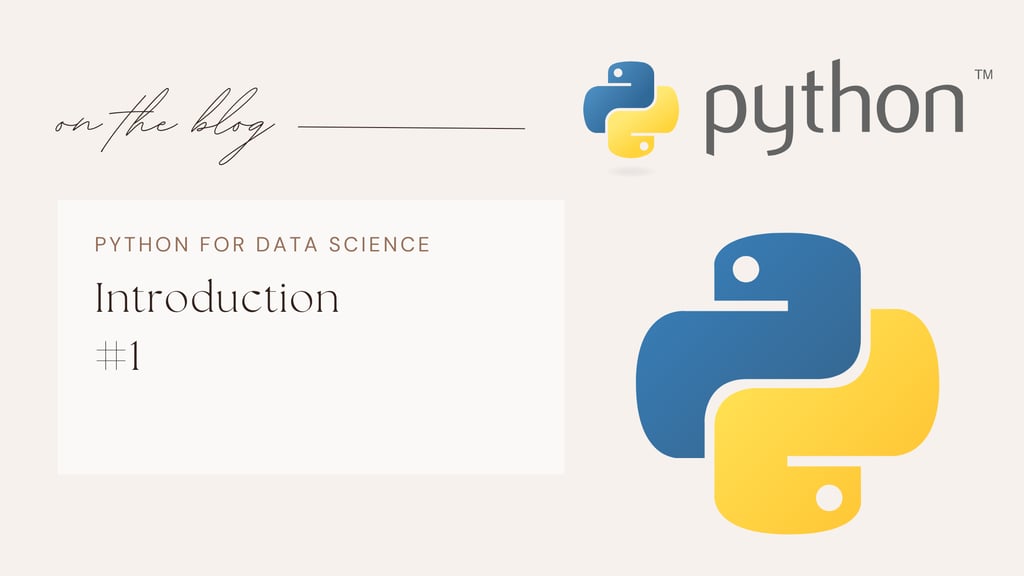Lesson 1: Why Python Is the Best First Language for Data Science | Jeslin Lois
Discover why Python is the #1 tool for data science. Jeslin Lois explains why beginners should learn Python, what this series will cover, and how to start coding for data science today.
Jeslin Lois
5/8/20243 min read


Most data scientists know Python.
But how many of us actually learned it from scratch — not just to memorise syntax, but to solve real problems?
I’m Jeslin Lois, a Senior Data Scientist who has worked on real‑world machine learning systems — everything from messy raw data to predictive models and dashboards.
Today, I’m kicking off a beginner‑friendly series designed for anyone who wants to learn Python the right way.
This series isn’t just about writing code.
It’s about turning Python into your most valuable tool as a data scientist.
Why Python Is the #1 Tool for Data Scientists
When someone asks me, “What should I learn first for data science?” — my answer is always the same: Python.
Here’s why Python is the foundation of modern data science:
It’s simple and readable. Perfect for beginners who don’t want to be buried in confusing syntax.
It has powerful libraries. From Pandas and NumPy to scikit‑learn and Matplotlib, Python covers every stage of the data science workflow.
You can do everything in one language. Data cleaning → analysis → machine learning → dashboards → deployment — all in Python.
It’s used by top companies worldwide. This isn’t just a “learning language.” It’s production‑ready, industry‑trusted, and future‑proof.
In short: Python isn’t just a programming language. It’s a bridge between your ideas and real impact.
What This Series Will Cover
This is a step‑by‑step beginner series that will take you from zero to machine‑learning‑ready Python.
Each post will include:
Clear explanations (no jargon or unnecessary theory)
Practical code snippets you can copy, run, and tweak
Google Colab notebooks so you don’t need to install anything on your computer
By the end of this series, you’ll not only understand Python — you’ll feel confident using it for real data science projects.
Who This Series Is For
This series is designed for:
Students learning Python or data science for the first time
Career switchers from non‑tech backgrounds
Aspiring data analysts and machine learning engineers
Even experienced professionals who want to refresh their fundamentals with a fresh, beginner‑friendly perspective
You don’t need prior coding experience.
All you need is curiosity, consistency, and a browser.
Tools We’ll Use
We’re keeping the setup simple and accessible:
Google Colab – Run Python code right in your browser (no installation required)
Python 3 – The latest, cleanest version of Python
Free Datasets – Real‑world examples for practice and mini projects
I’ll guide you through every tool we use — so even if you’ve never written a single line of code before, you’ll feel comfortable from the start.
What’s Next?
In the next blog post, we’ll write your first Python program together:
print("Hello, Data Scientist!")
We’ll also set up Google Colab and learn:
What a code cell is
How to run it
How to save your work
This will be your official first step into Python.
Final Thoughts
Learning Python isn’t about cramming syntax or memorizing interview questions.
It’s about building the confidence to use data and code to solve real‑world problems.
Follow this series weekly, and you’ll go from zero to building your first data science project — all in Python.
Stay Connected
Bookmark this page so you don’t miss the next lesson.
If you know someone who’s thinking about learning Python for data science, share this post with them — you might help them take the first step they’ve been waiting for.
And follow me here on the blog and on LinkedIn for weekly updates.
This is just the beginning — let’s learn Python for data science, the simple and structured way.
— Jeslin Lois